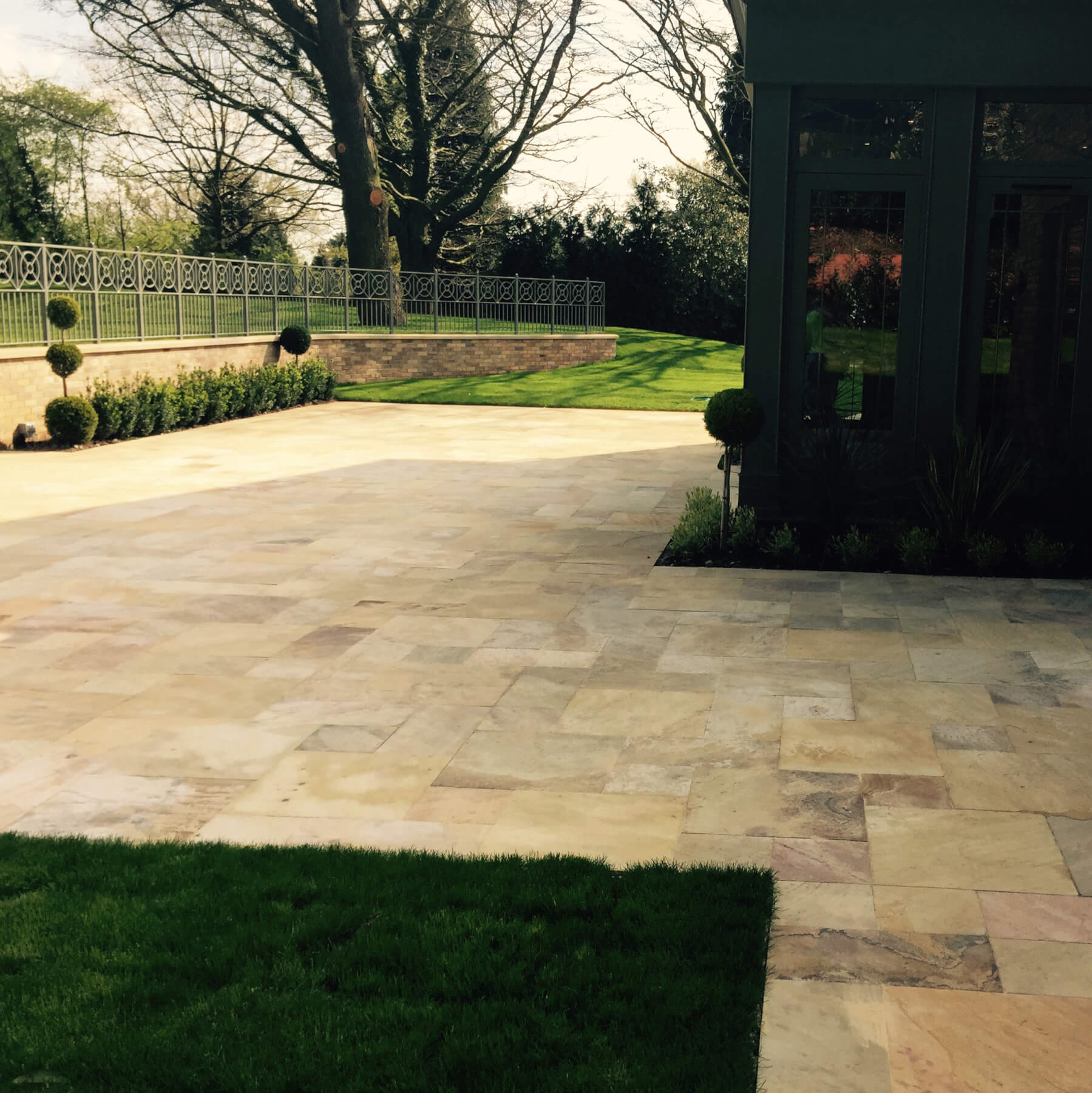Preparation is key to beautiful paving. Placing your sandstone slabs directly onto your garden for example is a complete no-no. Like any building project, the foundations are all-important and it is vital that your paving slabs are laid onto a structure that is built up from a number of layers of different material.
There are two types of layers sub-grade and sub-base.
Sub grade
Removing existing vegetation such as grass, weeds and roots is a priority, as these will decompose over time and settlement will occur. All topsoil is regarded as an organic material and therefore it must be removed to reveal the more stable sub soil which is referred to as sub grade. As most gardens have at least 150mm of topsoil, it is sometimes just much easier to remove all the topsoil until a firmer and more stable sub-soil is revealed. A sub-base then needs to be installed before laying the paving.
Sub base
The second layer is called a sub-base and this is vital if you want to prevent settlement. You can use various materials for this. The highest available grade of sub-base is known as type 1 MoT (Ministry of Transport) and it is a specific mixture of solids and fines that ensures there are no voids in the sub-base once compacted but it also allows for sufficient ground water drainage. You can also use ballast and crusher run although these aren’t so good for heavy traffic.
What tools do I need to lay my sandstone garden paving?
To prepare the site:
Sledgehammer, spade, shovel, pick, rake, wheelbarrow, string, tape measure.
To prepare the bed:
Trowel, float, cement mixer.
To lay the slabs:
Lump hammer, chisel, bolster, rubber mallet, spirit level, circular saw (with diamond blade for tougher materials), block splitter (for block paving jobs), plate compactor, brush.
Bedding or laying course
This is the layer onto which your paving is laid directly. It supports the slabs and compensates for any variations in thickness or texture which will occur when using a natural stone like sandstone.
The material you use for bedding your pavers will depend upon the type of stone so for example sandstone garden paving should be bedded with a moist sharp sand and cement mix which is suitable for pavers that aren’t of a uniform shape or size.
How to lay a patio
- Once the area has been prepared the next stage is to compact the hardcore to make the base solid.
- Hammer wooden pegs into the ground – they need to be at the same height to mark the level surface of the patio and level with any existing paving and manhole covers. Use a spirit level to ensure they are even.
- Time to arrange patio slabs. Getting the first slab in position is very important as it will act as a guide for others. Use a mortar mix with four parts sharp sand to one part cement to bed the slabs. You may choose a random design or something more uniform, but lay them on the ground to see how they look best together before you begin.
- Lay the patio slabs using a mortar mix– five parts building sand to one part cement. If you’re laying a small patio, do this in a wheelbarrow, for larger areas it’s worth hiring an electric cement mixer. Lay slabs on a bed of mortar 5cm – 8cm deep, tapping down firmly with a rubber mallet or pressing down with your hands.
- Level the slabs using the spirit level or a plank of wood to ensure they are level with the pegs you fixed into the ground previously.
- Edge the patio with paviours laid on a 5cm – 8cm layer of mortar, butting them closely together.
- Wash the patio slabs making sure you remove any splattered mortar before it hardens and marks the paving.
- Fill in gaps using a pointing trowel and the same mortar mix as before. Try not to get mortar on the slab surfaces as this will stain if allowed to set.
How much does this cost?
The average cost of laying a patio in a 20 square metre area is around £900 to £2,500. This price includes the cost to excavate the area, lay the foundations, buying the patio slabs and laying them.
When is the best time to lay paving?
Mild weather is considered best when it comes to paving installation so spring or early autumn would be ideal but as long as you make the right preparations you can lay your sandstone garden paving at a time of year that is convenient for you.
If you wish to know more about sandstone garden paving, take a look at our paving ranges or get in touch for more information.








